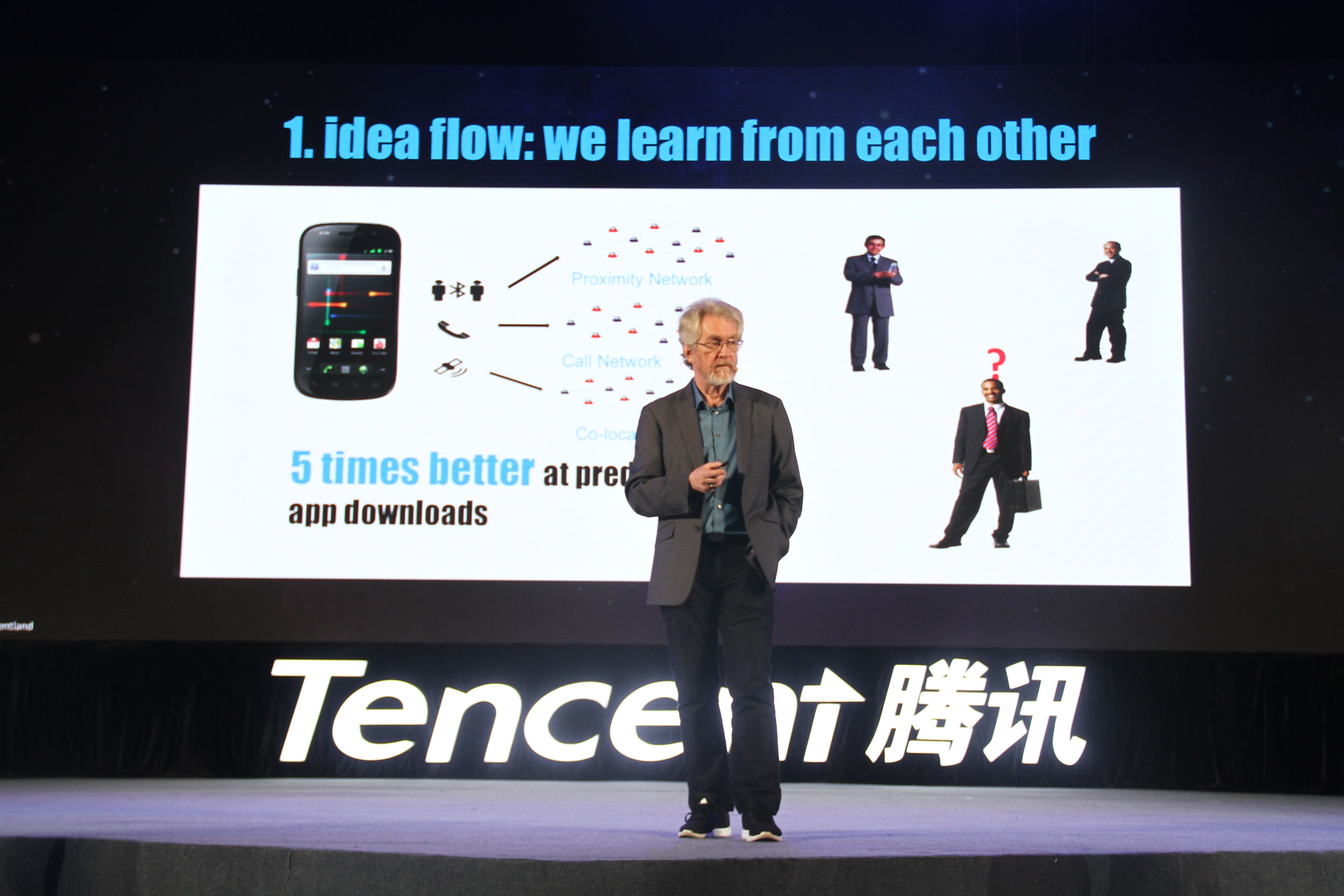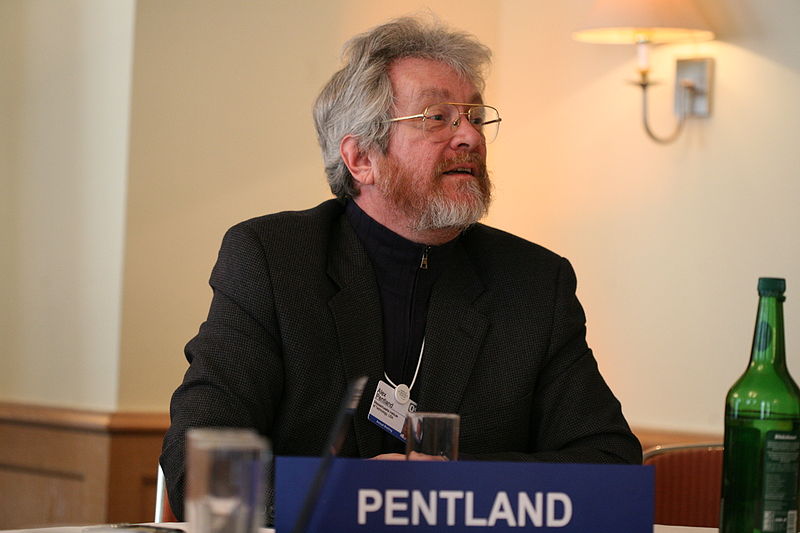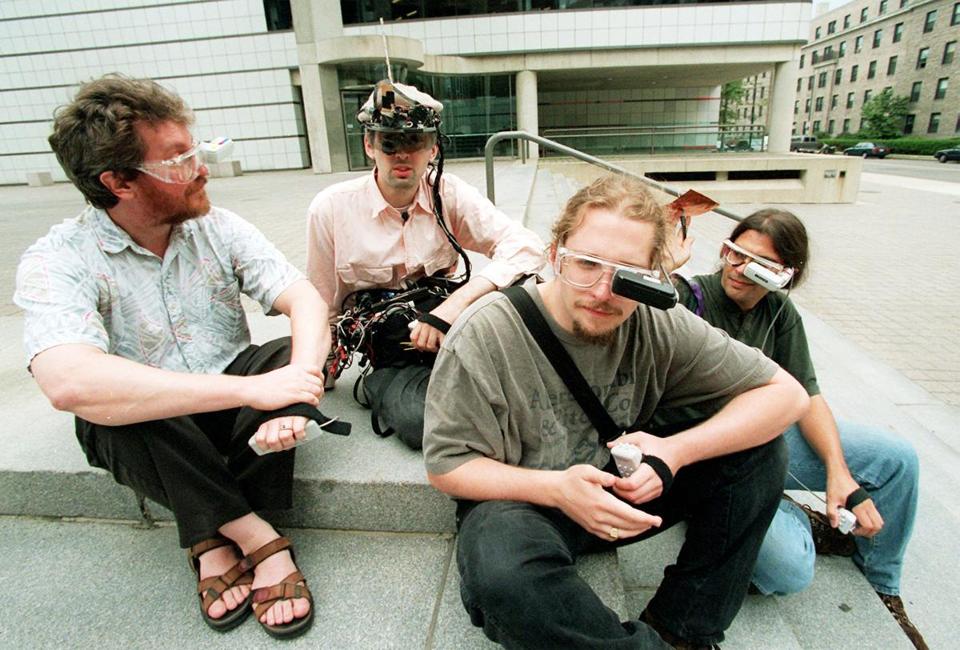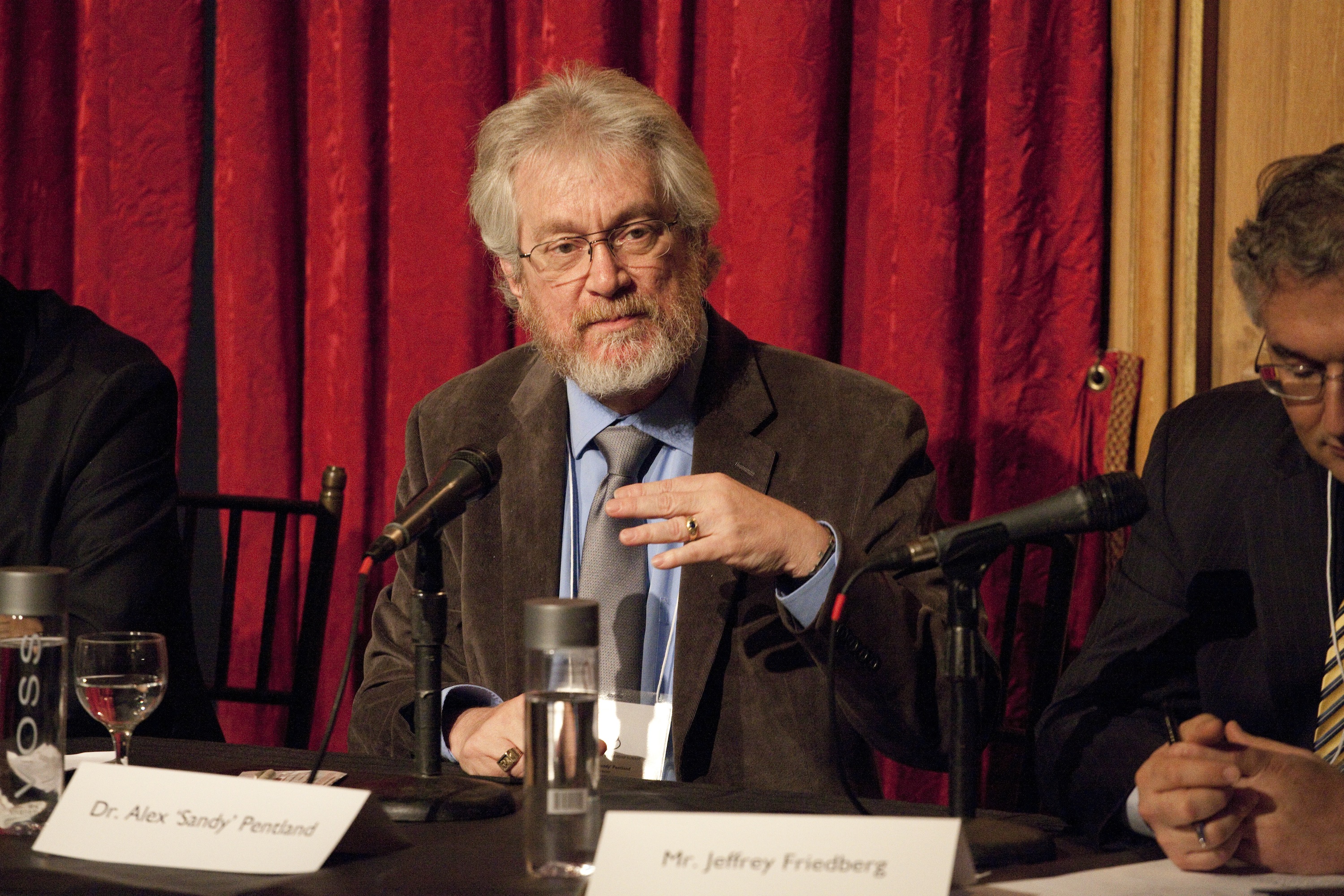
Can the information our computers gather about us improve our lives? In the future, will machines track our social interactions at work and at play? Will they improve our ability to make friends, find love, and succeed professionally?
“For the first time, we can precisely map the behavior of large numbers of people as they go about their normal lives,” says Data Scientist Alex (Sandy) Pentland in his book: Honest Signals: How They Shape Our World. Using a “sociometer,” built with “cell phones and electronic badges with integrated sensors,” (x) Pentland and his students created a way to understand and measure the effectiveness of human social interactions.
Pentland teaches computers to use huge numbers of simple observations to make insights about the world—some that humans can make easily, like telling your best friend’s face apart from your mother’s, and some, like who you’re likely to make friends with soon, that humans can’t make at all.
One of the first things Pentland taught a computer to do was to count beavers from space. When he first got to college, he didn’t really know what he wanted to do, but he knew that he wanted to be a scientist. He took some classes in psychology, some in math and some in computer science, and pretty soon he got a job helping out in an environmental research lab in his college. The lab used satellite images, pictures taken from space, to measure things about the world that it would be really hard for any person to do.

How many beavers do you think there are in Michigan? Going out and trying to count them in the middle of the woods would be next to impossible, but beavers leave traces on the world that a computer can read: their dams change the courses of streams, making ponds that show up in satellite images.
A human can easily tell the difference between a picture with a beaver dam in it and a picture without one—at least, if they know a little about beaver dams—but getting a computer to tell the difference in the 1970s was a serious project. This engineering challenge was Pentland’s first foray into computer vision and the beginning of a career of using math and computer science to understand how humans work.
After he graduated from college, Pentland applied to MIT for graduate school, but not as a math or a computer science student: he applied to the psychology program. He wanted to use computers to analyze the way people act, and that’s what he did. With the help of many volunteers, Pentland and students working with him used computers to collect a great deal of data on simple social interactions, and then they went looking for patterns in the data.

In one experiment, the Pentland lab gave smartphones to seventy college students living in the same dorm. For months, the subjects filled out surveys about whom they considered friends, about their current health, and about their current opinions. Their phones reported which internet access points were nearby—in effect, the phones’ exact locations—and which other devices were available on Bluetooth—in effect, which other phones were nearby.
In the beaver-counting experiment, computers were just speeding up a task that a group of humans would eventually have been able to complete. Here, though, analysis of the huge data set would have been impossible for any human. What can a human mind make of the locations of seventy people logged every six minutes for eight months? With the help of computer analysis, Pentland and his students were able to gather a bunch of information about their subjects.
It turned out, for instance, that the college students’ weight gain was strongly related to the weight gain of people around them, but not in a simple, positive way. When the people with whom a student spent a lot of time gained a lot of weight, that student would gain a lot of weight too, but if a student’s companions only gained a little weight, that student would actually be less likely to gain weight. It’s “a little spooky,” Pentland says: “it’s as if you saw them and you said ‘uh oh, they’re eating too much pizza.’”

Statistics also let Pentland and his students make guesses about whether you’re likely get to get the flu, whether you’re like to vote Democratic or Republican and even whether you’re likely to be attracted to someone, all based on very simple data. The team could tell which people in the dorm were likely to become friends even before they knew that themselves, and they did it simply by counting the number of minutes that people’s smartphones spent in the same room. The science, Pentland says, is just “counting things up and correlating them.”
Thanks to Sandy Pentland, psychology is a more powerful science than it was thirty years ago. From surveying subjects to asking them to complete made-up tasks, the field used to depend mostly on simple, human observations, but “that’s not real life,” Pentland says. “Once you have enough data, you can understand how things really work.” Check out his book Social Physics: How Good Ideas Spread — The Lessons from a New Science to learn more.

